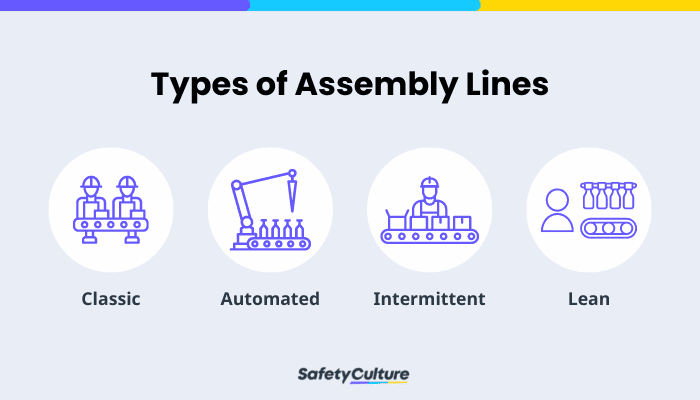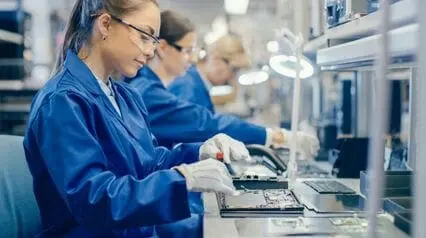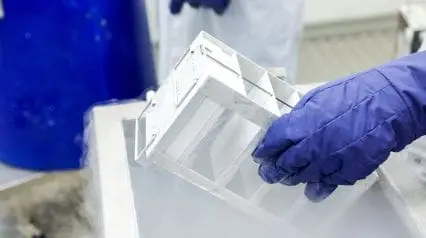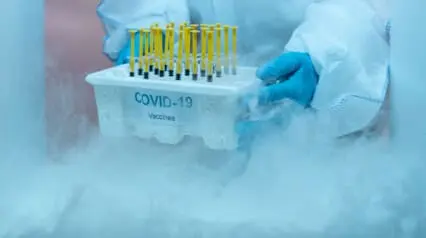What are Assembly Lines?
An assembly line is a manufacturing and production process wherein work is passed from one stage and machine to another. Different components come together and move from one workstation to another in a pre-determined linear sequence and are assembled in parts until the final product is created, hence the name “assembly line.”
Products that use assembly lines are often produced in batches, as its pieces and parts are made in groups and assembled together in batches as well. It is important to keep these batches as small as possible, as they are more flexible to work with, take up less space, and are easier to conduct quality control checks on.
History
The concept of assembly lines can go as far back as the 12th century when ships in the Venetian Arsenal in Italy were often moved down a canal to be fitted with new parts at different stops before it was considered a finished product.
As the industrial revolution happened, assembly lines were then carried out with the help of machines. Firearms and cars were created faster than ever as assembly lines sped up the creation process.
In 1901, Ransom Olds, one of the pioneers of the American automotive industry, officially patented the assembly line. Having an assembly line allowed his car manufacturing company to create more cars in a day, increasing his yearly output by 500 percent in one year. Olds’ car brand, Oldsmobile, then created cars that sold for an affordable price with stylish features.
Olds’ assembly line concept then became the inspiration for most automotive brands’ manufacturing processes. However, Henry Ford, the creator of Ford cars, wanted to improve his concept and create a more efficient way of manufacturing cars.
First, Ford divided his manufacturing process into specific steps for his workers to follow. Inspired by how flour mills, breweries, canneries, bakeries, and meat-packing factories, Ford then thought to install moving laneways in his factory. Following this, Ford eventually went on to utilize a conveyor system for his workers, creating a moving assembly line. This allowed his workers to work more efficiently, reducing the time it took to build a car from more than 12 hours to around an hour and a half.
From the 1950s and 1960s onward, assembly lines have been used for other industries such as robotics, clothing, and more, becoming the assembly lines we know today.
Types of Assembly Lines

There are many kinds of assembly lines, but the most common types are the classic type, the automated type, the intermittent type, and the lean manufacturing model.
Classic Assembly Line
Classic assembly lines are the most known form of assembly lines as it is the idea often associated with them. In classic assembly lines, products are assembled through different automated processes with a small amount of manual work needed. Workers, tools, and the necessary machinery are spaced out in a line wherein the product is assembled in stations. Here, human labor is often needed to perform small tasks such as tightening bolts and quality control.
Automated Assembly Line
On the other hand, automated assembly lines have little human involvement to operate. Common examples of automated assembly lines include large-scale mass production systems that use computer-controlled machines which create large products easily.
This assembly line type is also used for creating multiple products at the same time while reducing the risk to workers associated with assembly line work. Automated assembly lines also work with other types.
Intermittent Assembly Line
An intermittent assembly line is utilized to create customized orders. In this type, one production line is used throughout the process to create multiple products with different dimensions each time, such as different sizes and colors. This type can be made up of other assembly line types depending on the need for the product.
Some items that are often created in intermittent assembly lines are clothes of different sizes, instruments with different dimensions, and the like.
Lean Assembly Line
A type of assembly line that follows the lean manufacturing practice is called a lean assembly line. Following the concept of lean manufacturing, a lean assembly line aims to ensure a productive and efficient workplace by having the assembly line as simple as possible. This means that all necessary things are in the right places at the right time so that there is less wasteful movement or tasks. In this manner, lean assembly lines work similarly to cellular manufacturing, wherein workstations, product materials, and equipment are already arranged in a pre-determined order or sequence for a smooth workflow.
Compared to other assembly line types, however, teams of workers man each station of the manufacturing process and are also rotated to perform different tasks regularly. This allows workers to learn about the manufacturing process in depth, as well as avoid overworking and straining from doing repetitive tasks for long periods of time.
Manufacturers have found that this type of assembly line is also best suited for products produced in large quantities and those that are complicated to create.
Create Your Own Assembly Lines Checklist
Eliminate manual tasks and streamline your operations.
Get started for FREEAdvantages and Importance
Assembly lines have become an important part of manufacturing processes because it has allowed for quicker turnaround times, safer working conditions, and more cost-efficient work practices. Compared to factories operating with purely manual labor, those with assembly lines have the following advantages:
- Faster product assembly times
- More accurately completed products
- Clearer job descriptions for workers
- Lower risk of injury from repeated movements for workers
- More productive workers




